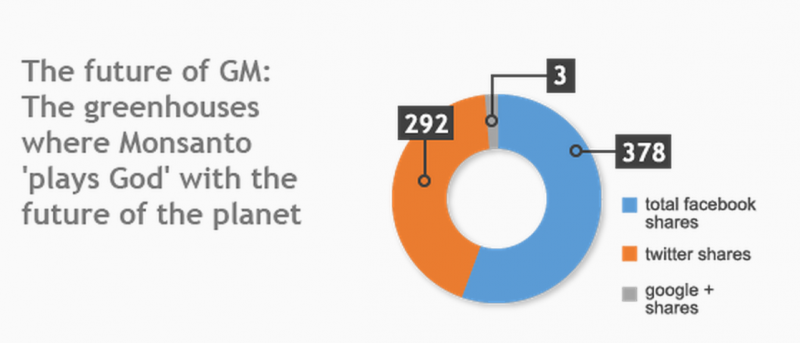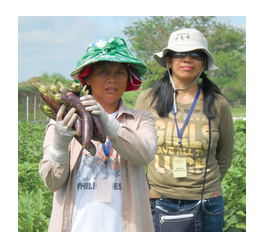 1. IARC Report: Glyphosate Could Cause Cancer
1. IARC Report: Glyphosate Could Cause Cancer
On March 20, the cancer-research arm of the World Health Organization announced that glyphosate, the world s most widely used herbicide, is probably carcinogenic to humans. The assessment, by the International Agency for Research on Cancer (IARC), was immediately met with a strong response from industry groups and critics of genetic engineering.
Monsanto, the maker of glyphosate-based Roundup herbicide and crops engineered to tolerate being sprayed with Roundup, demanded a retraction and explanation, saying glyphosate has been proven safe for decades, and that the IARC s finding was the result of a selective cherry picking of data and an example of agenda-driven bias.” Meanwhile, biotech critics, such as Gary Hirshberg, chairman of the “Just Label It” campaign, said that “our worst fears are now confirmed,” and argued that it confirmed the need for GMO labeling. New York Times columnist Mark Bittman responded to the report by calling for glyphosate to be pulled off the market.
For further reading on the response to the IARC s glyphosate announcement, see Dan Charles s report, Should We Be Scared? on National Public Radio, Nathanael Johnson s post on Grist, an analysis in Nature, Kevin Folta s review of the IARC s methodology, and the IARC lead scientist s response to critics. The Science Media Centre, an independent British-based non-profit that solicits reactions from top independent scientists when major new studies are released, has also posted a roundup of views on the glyphosate findings. Some excerpts:
This sounds scary and IARC evaluations are usually very good, but to me the evidence cited here appears a bit thin, said, Dr Oliver Jones, Senior Lecturer in Analytical Chemistry at RMIT University in Melbourne,
These conclusions of IARC are important and should be taken into account when evaluating these pesticides, but that must also take into account how the pesticides are used in the real world. In my view this report is not a cause for undue alarm, said Prof. Alan Boobis, Professor of Biochemical Pharmacology at Imperial College London.
The IARC report does not raise immediate alarms. However, I would expect regulatory authorities around the world to take note of this new evaluation, and to consider whether it indicates a need to review their risk assessments for any of the pesticides that they currently approve, said Prof. David Coggon, Professor of Occupational and Environmental Medicine at the University of Southampton,
For more detailed analysis of the IARC report, see the Science Media Centre s Expert Reaction to the Carcinogenicity of Five Pesticides by the IARC.

 2. The Independent (UK) Publishes Series on the 20th Anniversary of the GE Debate
2. The Independent (UK) Publishes Series on the 20th Anniversary of the GE Debate
Last month, the British newspaper, The Independent, published a multi-part series examining the state of GE technology and the GE debate nearly 20 years after Monsanto first introduced herbicide tolerant plants in the 1990s.
In The Greenhouses Where Monsanto Plays God, journalist Oliver Wright journeys to St. Louis to tour the 40,000 square feet of greenhouses and interview its top scientists. The result is a fascinating look inside the world s largest ag biotech company. Wright also filed a candid interview with Monsanto s CEO Hugh Grant, who admits for the first time the company s hubris in promoting the biotechnology contributed to a consumer backlash against GM foods. Grant also conceded the company made the wrong call when it failed to rebrand itself in the aftermath of the botched launch of GM in Europe. In addition to visiting Monsanto s St. Louis headquarters, Wright travelled to Uganda, the scene of a hotly contested debate over access to ag biotech crops. In The GM Crops Debate Moves to Africa and It s Just as Noisy, Wright examines the work to create a bacterial wilt resistant matooke banana, its potential benefits to Uganda, and frantic political lobbying around the country s biosafety bill. A second report ActionAid: The Charity Spreading Groundless’ Fears over GM looks at how the fear-mongering tactics of a leading NGO is impacting the Ugandan debate.
To conclude the series, The Independent offered its own opinion, making the case that Britain should embrace GM crops with health and environmental benefits, in an editorial titled, “Growing Gains: Unweilding Opposition to GM Crops Ignores the Wider Picture.
 3. Filipino Farmers Appeal Bt Eggplant Ban
3. Filipino Farmers Appeal Bt Eggplant Ban
A coalition of Filipino farmers is urging the country s Supreme Court to repeal a ban on Bacillus thuringiensis (Bt) eggplant. According to BusinessMirror, farmer Edgar Talasan of Impasug-ong, Bukidnon issued the appeal on behalf of 40,000 vegetable growers, arguing that the GE crop would vastly reduce the need for costly and dangerous pesticides. I apply pesticides twice a week, Talasan told BusinessMirror s Marvyn Benaning, but in other parts of the country, they apply pesticides every day.
Talasan urged the Supreme Court to repeal the ruling known as writ of kalikasan not only for the country s 40,000 eggplant farmers, but also so that consumers will not have to continue to eat conventional eggplant varieties that are, he said, soaked in a cocktail of chemicals that are potentially more lethal than the built-in protective armor of Bt eggplant.
BusinessMirror also reported that more Filipino farmers are growing Bt corn, which is not prohibited by the writ of kalikasan. According to International Service for the Acquisition of Agri-biotech Applications (ISAAA), 415,000 Filipino farmers are planting Bt corn on 831,000 hectares, making the Philippines 12th on the list of countries growing biotech crops.
 4. GMO Chocolate: Biotech May Be The Solution to Looming Cacao Shortage
4. GMO Chocolate: Biotech May Be The Solution to Looming Cacao Shortage
GMO chocolate may be on the horizon, National Geographic s Rebecca Rupp reported last month. A chocolate shortage is predicted to hit within the next five years the result of climate change, disease, and the demands of rapidly growing populations of chocolate lovers in China and India. The Nature Conservation Research Center predicts that within the next 20 years, chocolate will be as rare and as expensive as caviar. And some scientists believe biotech may be the best chance of protecting the chocolate harvest.
Chocolate comes from the seeds of the cacao tree, Rupp writes, which only grows in a belt 20 degrees north or south of the Equator. Along with its geographical limitations, cacao is a notoriously slow growing tree that is highly susceptible to disease. Some researchers say that creating an ideal chocolate, even with advanced biotech, isn t going to be easy, writes Rupp, who adds that chocolate contains some 600 different flavor components. Assembling the right mix of flavors along with disease-resistance, and a rapid growth rate is a challenge. Still, Rupp concludes, it may be our best chance to save chocolate.
 5. GMO Wine? Biotech Could Increase Nutritional Quality of Wine AND Reduce Hangovers
5. GMO Wine? Biotech Could Increase Nutritional Quality of Wine AND Reduce Hangovers
University of Illinois researchers announced last month that they have produced genetically engineered yeast that could vastly increase the nutritional quality of wine, while also reducing its hangover-inducing properties. According to Gizmag s Colin Jeffrey, the Illinois scientists have developed a genome knife that enables them to do precise engineering of microbes, including the strains of Saccharomyces cerevisiae that are used in the production of wine, beer, and other fermented foods and beverages. Using this knife, Jeffrey writes, scientists can increase the plusses of drinking wine while also mitigating some of the minuses.
Yong-Su Jin, one of the lead researchers, said that the genome knife will enable them to increase the resveratrol component in wine. With engineered yeast, we could increase the amount of resveratrol in a variety of wine by 10 times or more, Jin told Gizmag. But we could also introduce bioactive compounds from other foods, such as ginseng, into the wine yeast. Or we could put resveratrol-producing pathways into yeast strains used for beer, kefir, cheese, kimchee, or pickles any food that uses yeast fermentation in its production.”
The aspect of the University of Illinois that generated global attention had little to do with nutritional improvements. If winemakers were to clone this new enzyme, then they could not only use it to improve fermentation to produce a consistently smoother wine, they could also remove the toxic byproducts that can cause hangovers, reports Vice in Rooibos-Infused Wine Might Save You a Headache.

 1. IARC Report: Glyphosate Could Cause Cancer
1. IARC Report: Glyphosate Could Cause Cancer
 2. The Independent (UK) Publishes Series on the 20th Anniversary of the GE Debate
2. The Independent (UK) Publishes Series on the 20th Anniversary of the GE Debate 3. Filipino Farmers Appeal
3. Filipino Farmers Appeal  4. GMO Chocolate: Biotech May Be The Solution to Looming Cacao Shortage
4. GMO Chocolate: Biotech May Be The Solution to Looming Cacao Shortage 5. GMO Wine? Biotech Could Increase Nutritional Quality of Wine AND Reduce Hangovers
5. GMO Wine? Biotech Could Increase Nutritional Quality of Wine AND Reduce Hangovers